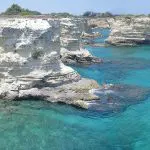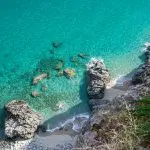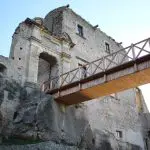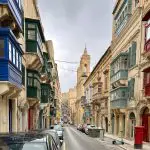UNESCO World Heritage Sites are scattered throughout the world. If you do any search on Italy, you’ll most certainly come across a plethora of these important and protected sites in Italy. As a matter of fact, Italy is home to 55 UNESCO World Heritage Sites, making it the country with the highest number of Heritage Sites in the world together with China. That’s pretty impressive if you take into consideration the enormous difference in size between the two countries.
If you are planning a trip to Southern Italy, we strongly suggest you consider including these sites to your travel itinerary. Here are a few of our favorites that can be found in Southern Italy:

Val di Noto (Sicily)
Val di Noto is in the South-Eastern part of Sicily. The area, which became an UNESCO World Heritage site in 2002, is made up of eight towns: Caltagirone, Catania, Militello Val di Catania, Modica, Noto, Palazzolo Acreide, Ragusa and Scicli. What’s interesting about this area is its very prominent Late Baroque style. In 1693 a devastating earthquake destroyed many of the towns in and around this area. As a result, the towns were rebuilt using the techniques and styles of the period which was known for its more ornate patterns that captured light in interesting ways.
The small town of Noto is probably the most popular destination for tourists thanks to its impressive noble residences and Cathedral. Noto becomes even more impressive just before sunset as the last rays of the sun caress the limestone buildings with a soft-golden light. If you want to linger away from the crowd or you are already planning to visit Noto, consider also stopping in Ragusa. The town sits on a hill between two deep valleys and is the perfect opportunity to see a town that is almost entirely built in Baroque Style. If you enjoy a stroll through quaint streets lined with ancient Baroque-style buildings, you definitely need to visit Ragusa.

The Trulli of Alberobello (Puglia)
Alberobello, located in the province of Bari, gets its name from the beautiful oak forest that once covered the area. However, the real beauty of this town is found in its remarkable limestone dwellings, known as Trulli. These charming houses are carved into large limestone rocks and have cone-shaped roofs giving them their unique form. The Trulli became an UNESCO World Heritage Site in 1996, but they’ve been capturing the hearts of visitors long before that.
The town is divided into two parts: Rione Monti and Aia Piccola. Rione Monti is home to about 1000 trulli and therefore tends to be more touristy. Aia Piccola has far fewer trulli but the picturesque residential streets really allow you to feel like you are living in a fairy-tale. For one of the best views of the Trulli in Alberobello, head to the Church of Santa Lucia, located next to the main town square, Piazza del Popolo.

The Royal Palace and Park of Caserta (Campania)
The 18th-Century Royal Palace in Caserta is the largest in the world and was named an UNESCO World Heritage Site in 1997. It was built under the order of King Charles III of Bourbon. The idea was that it would be the “centre” for the new Kingdom of Naples which was now independent and free. The complex consists of the Royal Palace as well as surrounding park and gardens. It was built with the intention to rival similar palaces, in particular Versailles and the Royal Palace in Madrid.
The Royal Palace of Caserta has a rectangular plan which is divided into buildings that overlook four large internal courtyards. Just looking at the grandeur exterior of this building is quite impressive but that’s nothing compared to what awaits you inside. The Great Staircase, which leads up to the lush Royal Apartments, can only be described as a work of art with all the intricate details, from the detailed carvings in the wall to the large marble statues that welcome you.
The Palace grounds are equally beautiful, blending traditional Italian and Renaissance garden styles. The gardens display elaborate sculptures and water fountains that are simply breathtaking. The Diana and Actaeon fountain, located at the end of the park, incorporates the natural waterfall that cascades down the natural slope of the land.
If you are interested in finding out more about these sites or the regions they are in, contact us for more information!









